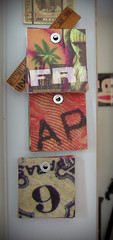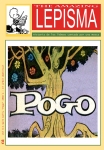
In the beginning (OK, in 2001), there was the original 5GB iPod—and we were lucky to have it. But in the past four years, Apple has made things a bit more complicated, adding several new members to the iPod family. Not too long ago, making an iPod-buying decision boiled down to exactly one factor: whether you had the money to pay for it.
Now that Apple offers three versions of its diminutive music player—the iPod shuffle, the iPod mini, and the color iPod (including the iPod U2 Special Edition and most HP-branded models)—at prices ranging from $99 to $400, there’s far more to consider. Will a small iPod or a large iPod serve you better? And is there any advantage to owning Apple’s iPod instead of one branded with the HP logo? I’ve had my hands on every iPod model Apple has released, so I’m in a unique position to give advice on finding the iPod that’ll be the best fit for you.
iPod with color display
Not long ago Apple offered the fourth-generation iPod—a model with monochrome display—and a separate iPod photo, an iPod that could not only play music, but display color pictures on the iPod’s screen as well as project those pictures to an attached television or projector. In June 2005, Apple brought color to all its full-sized iPods (the iPod U2 Special Edition included) and dropped the “photo” appendage from the iPod’s name.
The name change doesn’t mean that the iPod has lost any of its photo capabilities. As with the earlier iPod photo, you can use Apple’s $30 iPod Camera Connector accessory to load pictures from a digital camera onto the iPod without having to first process them in iTunes. (Normally, you need to load your pictures onto your Mac or PC, where iTunes processes them for iPod compatibility, and then run a sync to download them to your iPod.) The iPod with color display can also take advantage of the Apple iPod AV Cable (now a $19 accessory) to connect the iPod to a television or projector.
People who don’t need this iPod’s photo features shouldn’t dismiss it too quickly. Even though its photo capabilities are its most glamorous feature, the addition of color improves everything about the iPod’s interface. Calendar events are far easier to differentiate, Solitaire is finally playable (because with color you can tell one suit from another more easily), and color album art is just cool no matter how you look at it.
While the iPod with color display offers more storage than the iPod mini (offering capacities of 20- and 60GB versus the mini’s 4- and 6GB hard drive capacity), it takes an hour longer to fully charge than the mini (five hours versus four for the mini) and offers less skip-protection—providing up to 17 minutes of protection versus up to 25 minutes for the mini. It also offers less playtime-per-charge (Apple rates the iPod’s playtime at up to 15 hours of music playback and up to 5 hours of slideshow playtime though we’ve managed over 17 hours of playtime on a color iPod when pressing play and walking away). But this iPod boasts a larger display, which allows you to view three lines of text on the Now Playing screen as compared to the two lines displayed by the mini (and zero lines of text shown on the display-less iPod shuffle).
These iPods have all the music and storage features switched on—unlike the mini and the shuffle, this iPod allows you to record voice memos with a third-party voice recorder such as Griffin Technology’s $40 iTalk or Belkin’s $50 Voice Recorder for iPod with Dock Connector. You can also store and view digital pictures on the iPod with Belkin’s $50 Media Reader for iPod with Dock Connector (Belkin’s $40 Digital Camera Link for iPod with Dock Connector will download pictures to the iPod but you can’t view them without first processing them through iTunes).
The HP iPod models—called Apple iPod + HP—differ slightly from Apple’s offerings. As I write this, HP still offers a 20GB monochrome iPod priced at $300. It will also sell you a 30GB color model for $350 plus its own 60GB color iPod that’s identical to Apple’s offering except for the two companies’ warranty support.
Specifically, Apple provides a one-year warranty but only 90 days of free phone support; it further restricts those terms in that all repairs after the first six months require a $30 shipping and handling fee, and the free phone support applies to only one incident within the first 90 days after purchase. HP, on the other hand, provides a full year of both hardware warranty and phone support, with toll-free technical support available 24 hours a day, 7 days a week. HP also provides out-of-warranty support via e-mail. HP provides support only for Windows-formatted iPods, however.
If history tells us anything, HP’s models will soon match Apple’s lineup.
Capacity and Price 20GB (approximately 5,000 songs), $299; 60GB (approximately 15,000 songs), $399; iPod U2 Special Edition 20GB (approximately 5,000 songs), $329.
Ideal Usage and User If you’re looking for the ultimate in an iPod—a color display, the ability to view and project pictures, a decent amount of playing time, and enough storage for a very large music library—you and the iPod with color display were meant for each other.
iPod mini (second generation)
When Apple first released the iPod mini, the company positioned it as a competitor to other manufacturers’ high-end flash memory-based music players. But it wasn’t long before people forgot all about how the iPod mini compared to the competition and simply thought of it as a great way to shove a thousand tunes into the coolest looking music player on the market. The iPod mini has nearly the same functionality as the original fourth-generation iPod. Its screen is smaller, so it doesn’t display as much information as the larger iPods (the mini’s Now Playing screen, for example, doesn’t display the title of the currently playing album). The screen remains monochrome. And these iPods don’t support voice recording and media storage via third-party peripherals.
When you consider the price-to-storage ratio, the mini isn’t as good a deal as the iPod with color display. Cost per megabyte for the $199 4GB iPod mini is around 5 cents. And a megabyte on a $249 6GB mini costs about 4 cents. Compare this with about 2 cents per megabyte on a $299 20GB iPod, and you see that people who want the most for their money may pass on the mini’s cool exterior and handy size in favor of the higher-capacity iPod.
If you intend to put a lot of hours on your iPod, you’ll find the mini’s playing-time capabilities very attractive. Though Apple suggests that the 2G mini can play for up to 18 hours, I’ve been able to play nonstop music on a 6GB mini for more than 26 hours on a single charge. As I mentioned earlier, the best I’ve done with a color iPod is just over 17 hours.
Capacity and Price 4GB (approximately 1,000 songs), $199; 6GB (approximately 1,500 songs), $249.
Ideal Usage and User The mini, with its vibrant green, blue, pink, or silver case, is Apple’s most fashionable iPod. If you have a sense of style and want to store a goodly number of songs on a small, portable music player, you may just find it hard to resist.
iPod shuffle
Apple’s least-expensive iPod offers a host of advantages: it’s affordable enough to be an impulse buy, it sounds as good as any other iPod, it never skips (because it stores music on solid-state flash memory rather than a moving hard drive), it’s highly portable, and it holds more than enough music to get you through a long drive or a marathon run (though rated at up to 12 hours of play time, it can get much more). It doesn’t, however, include a screen for navigating to specific songs. And its capacity is limited enough that only people with very small music collections will be able to store an entire library on it.
Capacity and Price 512MB (approximately 120 songs), $99; 1GB (approximately 240 songs), $129.
Ideal Usage and User The shuffle’s non-skip nature and small size make it the perfect companion for exercising. And it’s easily cheap enough to become your second, “just kickin’ around” iPod. It’s also a good choice for kids (or adults) who tend to misplace their valuables. (Losing a $99 shuffle is a lot easier to swallow than misplacing a $400 iPod.)
With Thanks to Apple & Christopher Breen




























































